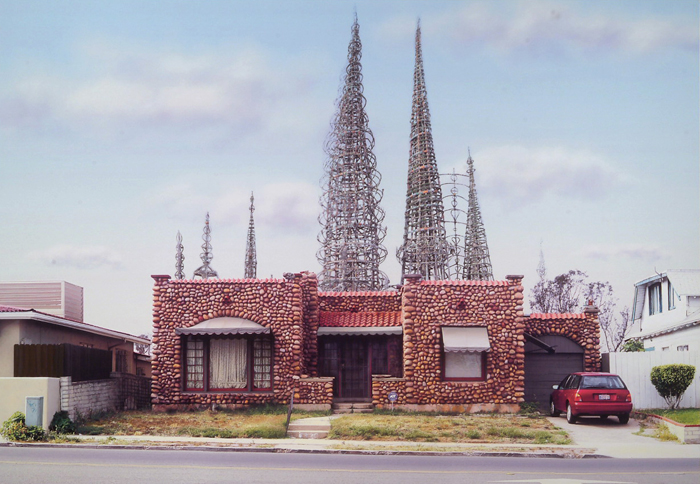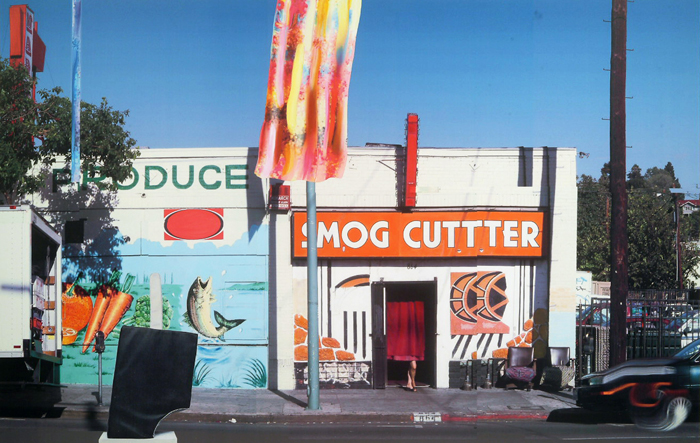
I first met Steven Criqui the way most artists meet each other, in that I met his work before I met the person. I remember the exhibition well; it was at a seminal Santa Monica gallery called Foodhouse (the seed of the well-known Los Angeles gallery Acme) that existed before the art market in Los Angeles had ratcheted up to its present hyper-accelerated pace. Foodhouse was like a lot of low-budget shoestring operations: small and more than a little rough around the edges. Yet, as is often the case with truly great art, Steve’s work raised everything around it to a higher plane. His use of Southern California light and color was spectacular and would later belie his San Diego origins. He painted the early pictures in enamel and framed them using plywood and resin, obvious references to both California car and surf culture. His work was also related to other local artists of his generation due to its emphatic embracing of do-it-yourself culture, an aesthetic manifested in the knowledge and use of industrial materials and an attitude that mandated resolution on one’s own terms. Steve’s imagery was a reduction of the built landscape of Los Angeles into an abstraction of simple shapes and colors; this is a subject he would explore up until the end of his life. One could see a bit of Helen Lundberg, Karl Benjamin, Ed Ruscha and Lari Pittman in the foundations of the work, but Steve’s use of this vernacular, which was later to become quite common in Los Angeles art, was among the first in my memory. I find it hard to imagine a Monique Prieto, Ingrid Calame or Kevin Appel without a Steven Criqui. His moment on this world was quite brief by today’s standards, but his influence and memory as an artist will persist in the hearts and minds of those of us who knew him.
Adam Ross, March 2007

As artists and teachers, Steve’s and my life intersected for years. We’d meet for studio visits or we’d be working together at some college or university; early on he worked at the gallery where I was exhibiting. We would talk about all the stuff artists are involved with and over the years the conversations matured into a pleasant familiarity. Steve was very supportive and genuinely excited about my work. I think he might have indulged me a little too much but he was that kind of person. For a time, Steve and I were carpooling together to Otis to teach upper-level undergraduates. At the end of the academic year the faculty had to put together an exhibition of the students’ artwork. Well, it turned out to be much more work that we expected, especially for us part-timers. I’m a hard worker but I can complain sometimes, which generally doesn’t help matters. Steven, on the other hand, was the guiding light for all of us. Picking up materials (he had a very cool pickup truck), helping design the exhibition layout, building and painting walls; I just followed his lead. The exhibition was a success; the students’ work looked great and there was a fantastic crowd for the opening. It was one of those experiences I’ll never forget because it was so demanding, yet rewarding. It was around this time that Steve told me one of his kidneys was failing. I felt that nothing could harm this truly generous person. We never talked much about the operation, probably because it made me so uncomfortable, feeling that he was somehow in danger. Steve taught me that all life is a gift, a phenomenon. His intelligence and style were so enjoyable. He handled all the responsibilities of life with grace, power and humility. He was my Steve McQueen. So cool. So unattainable. Actually, he was just a great guy and that’s what I want to be.
Tim Ebner, April 2007
